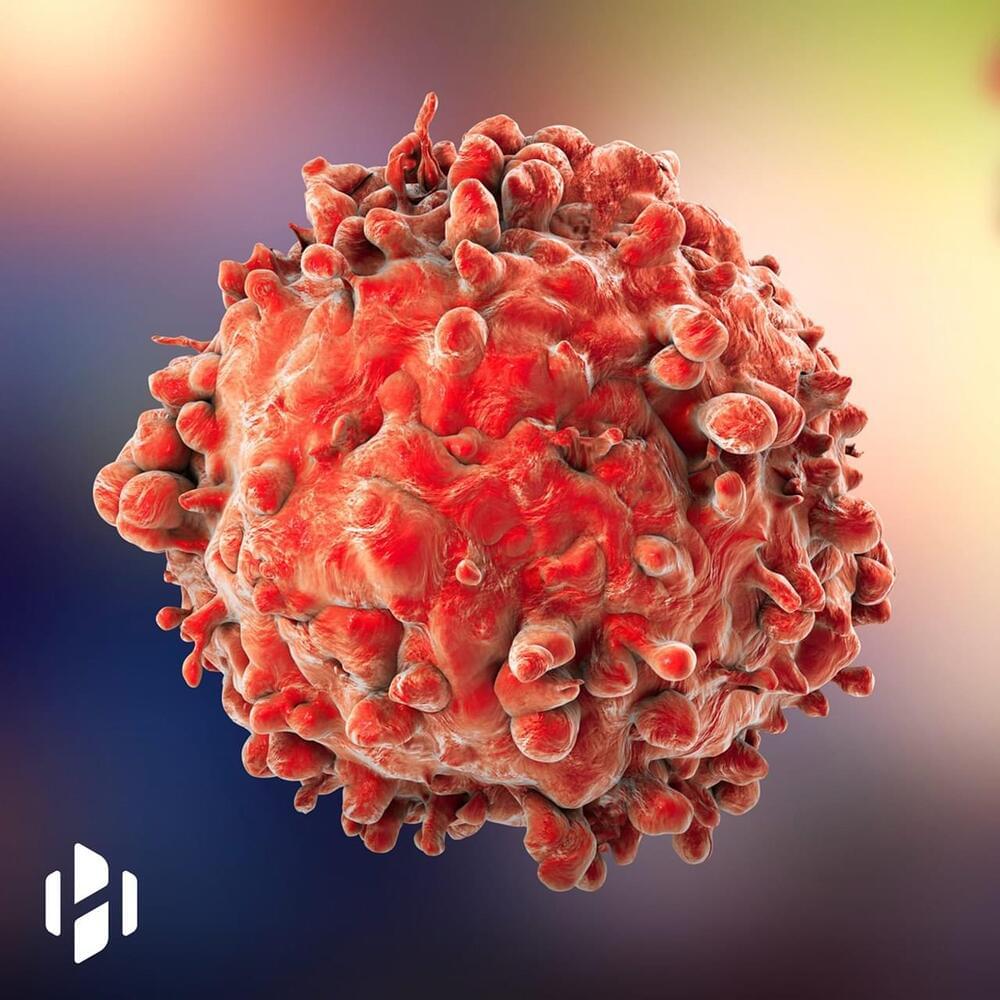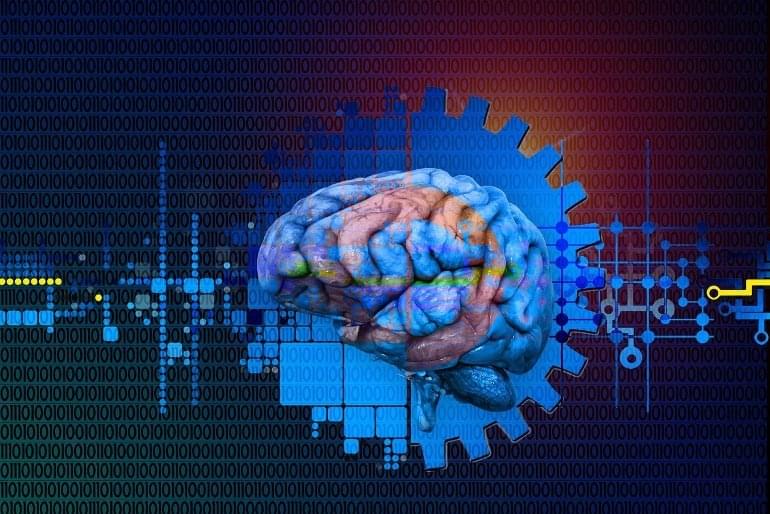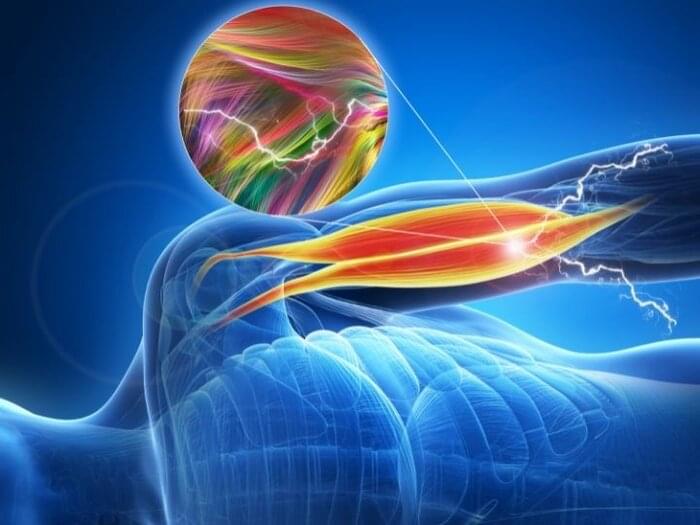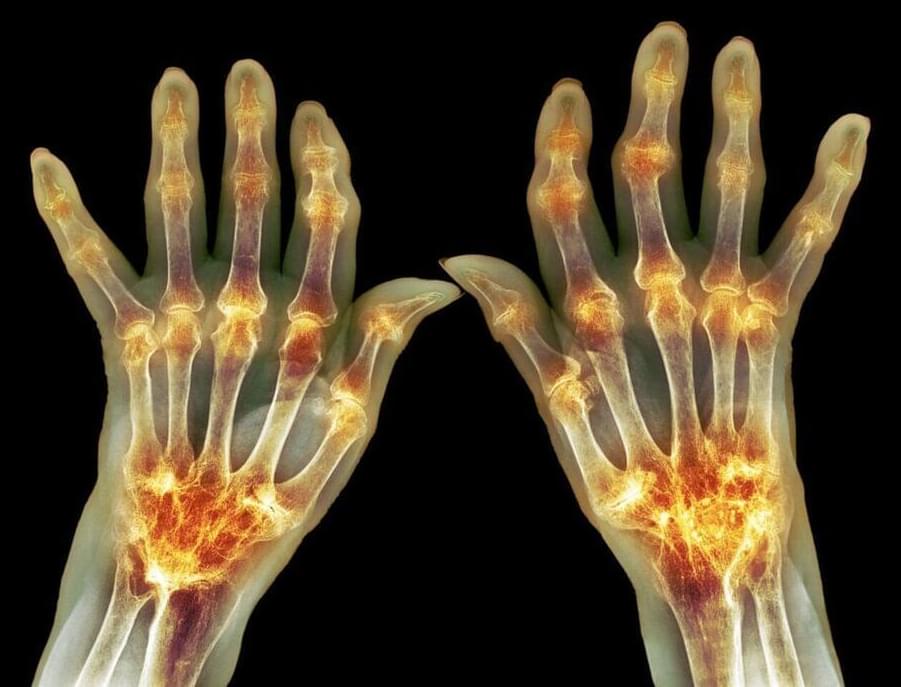
Category: biotech/medical – Page 1,696


A Vaccine To Prevent Cancer Evolution
A cancer vaccine could be an effective way to prevent cancer from evolving and becoming resistant to treatment, new research suggests.
Scientists were investigating the use of a cancer-killing virus in clinical trials, and observed, as they had also seen in mice, that although some patients initially responded to the treatment, their tumours soon became resistant.
The researchers showed that the specific mutations causing tumour cells to become resistant to the viral treatment, could be anticipated and exploited using a vaccine which, when tested in mice, was shown to trigger the immune system to destroy treatment resistant tumour cells.
Scientists have developed a cancer vaccine that in mice was shown to trigger the immune system to destroy treatment-resistant tumor cells.

AI Can Predict Possible Alzheimer’s With Nearly 100 Percent Accuracy
Summary: A new AI algorithm can predict the onset of Alzheimer’s disease with an accuracy of over 99% by analyzing fMRI brain scans.
Source: Kaunas University of Technology.
Researchers from Kaunas University, Lithuania developed a deep learning-based method that can predict the possible onset of Alzheimer’s disease from brain images with an accuracy of over 99 percent. The method was developed while analyzing functional MRI images obtained from 138 subjects and performed better in terms of accuracy, sensitivity, and specificity than previously developed methods.

Drugs to use, avoid when treating COVID-19: Top health system physicians weigh in
More than 18 months into the COVID-19 pandemic, there are still very few drugs authorized by the FDA to treat the virus. Just one drug, remdesivir, has gained full FDA approval as a treatment for COVID-19.
Becker’s asked physicians from top health systems which medications they’re using most frequently to treat their COVID-19 patients, which they’re avoiding and which have been most effective.

Researchers use organic semiconductor nanotubes to create new electrochemical actuator
University of Houston researchers are reporting a breakthrough in the field of materials science and engineering with the development of an electrochemical actuator that uses specialized organic semiconductor nanotubes (OSNTs).
Currently in the early stages of development, the actuator will become a key part of research contributing to the future of robotic, bioelectronic and biomedical science.
“Electrochemical devices that transform electrical energy to mechanical energy have potential use in numerous applications, ranging from soft robotics and micropumps to autofocus microlenses and bioelectronics,” said Mohammad Reza Abidian, associate professor of biomedical engineering in the UH Cullen College of Engineering. He’s the corresponding author of the article “Organic Semiconductor Nanotubes for Electrochemical Devices,” published in the journal Advanced Functional Materials, which details the discovery.


Immunogenicity and safety of a recombinant fusion protein… : Chinese Medical Journal
Innovative coronavirus disease2019(COVID-19) vaccines, with elevated global manufacturing capacity, enhanced safety and efficacy, simplified dosing regimens, and distribution that is less cold chain-dependent, are still global imperatives for tackling the ongoing pandemic. A previous phase I trial indicated that the recombinant COVID-19 vaccine (V-01), which contains a fusion protein (IFN-PADRE-RBD-Fc dimer) as its antigen, is safe and well tolerated, capable of inducing rapid and robust immune responses, and warranted further testing in additional clinical trials. Herein, we aimed to assess the immunogenicity and safety of V-01, providing rationales of appropriate dose regimen for further efficacy study.
Methods:
A randomized, double-blind, placebo-controlled phase II clinical trial was initiated at the Gaozhou Municipal Centre for Disease Control and Prevention (Guangdong, China) in March 2021. Both younger (n = 440; 18–59 years of age) and older (n = 440; ≥60 years of age) adult participants in this trial were sequentially recruited into two distinct groups: two-dose regimen group in which participants were randomized either to follow a 10 or 25 μg of V-01 or placebo given intramuscularly 21 days apart (allocation ratio, 3:3:1, n = 120 120, 40 for each regimen, respectively), or one-dose regimen groups in which participants were randomized either to receive a single injection of 50 μg of V-01 or placebo (allocation ratio, 3:1, n = 120 40, respectively). The primary immunogenicity endpoints were the geometric mean titers of neutralizing antibodies against live severe acute respiratory syndrome coronavirus 2 and specific binding antibodies to the receptor binding domain (RBD).

COVID-19 Research Quantifies Antibody Response to Pfizer, Moderna Vaccines
New research from the University of Virginia School of Medicine quantifies the antibody response generated by the Pfizer and Moderna COVID vaccines. The findings are some of the earliest to compare the two vaccines’ antibody responses head-to-head. The notable finding was that antibody levels in recipients of the Moderna vaccine were slightly higher than in recipients of Pfizer.
The researchers caution against drawing conclusions about the vaccines’ effectiveness based on the antibody numbers. Both vaccines, they say, have performed exceptionally after having been given to millions of people around the world. The new results are just a small piece in a much larger puzzle as scientists seek to determine if one vaccine may be superior for certain demographics.
“The thing that will be interesting is figuring out if measuring antibody levels ends up being a good marker of vaccine protection,” UVA immunologist Dr. Jeffrey Wilson said. “At the moment, we don’t know for sure.”
The UVA study offers insights into vaccine recipients’ immune response by age.

CRISPR-Engineered Cells Release Drug in Response to Inflammation When Implanted into Mice
For the newly reported study, Guilak’s team combined these two strategies to generate a new treatment approach for rheumatoid arthritis.
Researchers at Washington University School of Medicine in St. Louis have used CRISPR-Cas9 genome editing to engineer induced pluripotent stem cells (iPSCs) that can be implanted subcutaneously to deliver an anticytokine biologic drug in response to inflammation caused by rheumatoid arthritis. When implanted into a mouse model of rheumatoid arthritis the engineered cells automatically sensed and responded to inflammatory cytokines, and produce therapeutic levels of the drug, which reduced inflammation and also prevented bone erosion.
“Doctors often treat patients who have rheumatoid arthritis with injections or infusions of anti-inflammatory biologic drugs, but those drugs can cause significant side effects when delivered long enough and at high enough doses to have beneficial effects,” said senior investigator Farshid Guilak, PhD, the Mildred B. Simon Professor of Orthopedic Surgery. “We used CRISPR technology to reprogram the genes in stem cells. Then we created a small cartilage implant by seeding the cells on woven scaffolds, and we placed them under the skin of mice. The approach allows those cells to remain in the body for a long time and secrete a drug whenever there is a flare of inflammation.”
Guilak and colleagues report on their studies in Science Advances, in a paper titled, “A genome-engineered bioartificial implant for autoregulated anticytokine drug delivery.”

GM to halt production at nearly all North America assembly plants due to new chip problem
General Motors will idle nearly all its assembly plants in North America starting Monday as the COVID-19 pandemic affects production of semiconductor chips overseas.
GM said its Arlington Assembly in Texas, where it makes its highly profitable full-size SUVs, will run regular production next week, along with Flint Assembly, where it makes its heavy-duty pickups, Bowling Green Assembly in Kentucky, where it makes its Corvette, and a portion of Lansing Grand River Assembly, where it will make some Chevrolet Camaro and Cadillac Blackwing cars.
But all other assembly plants in North America will idle starting Monday.